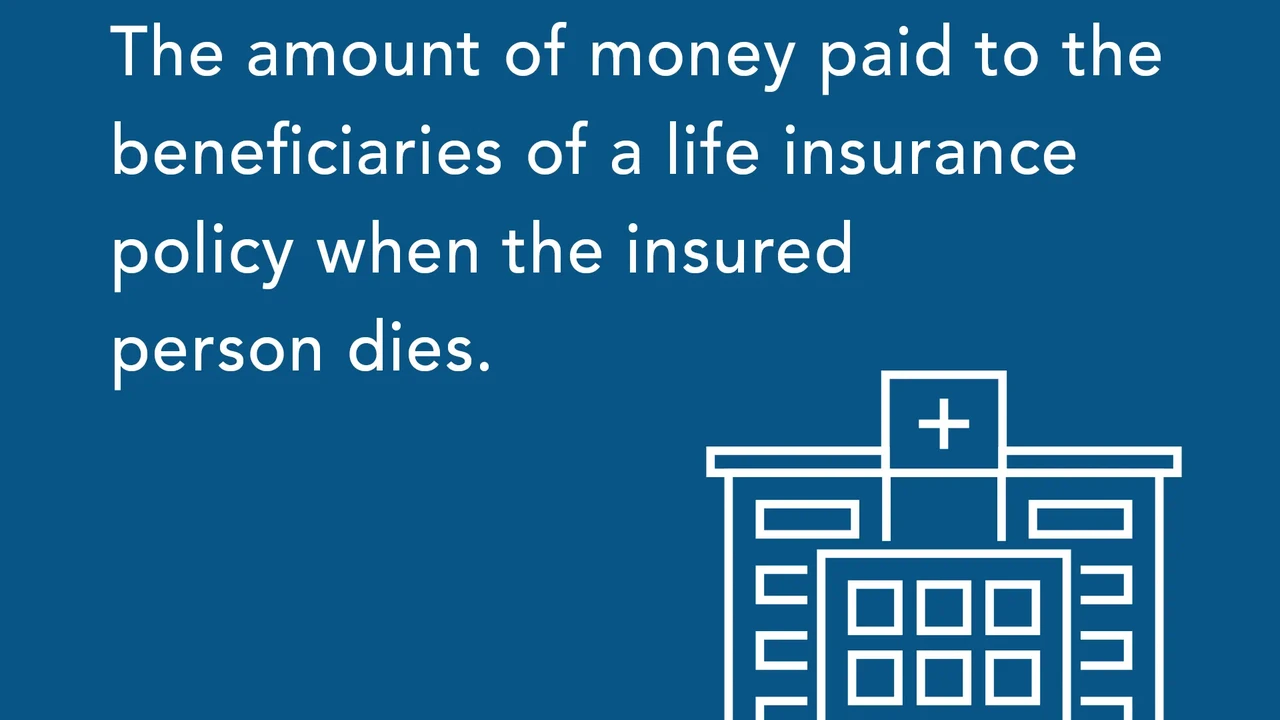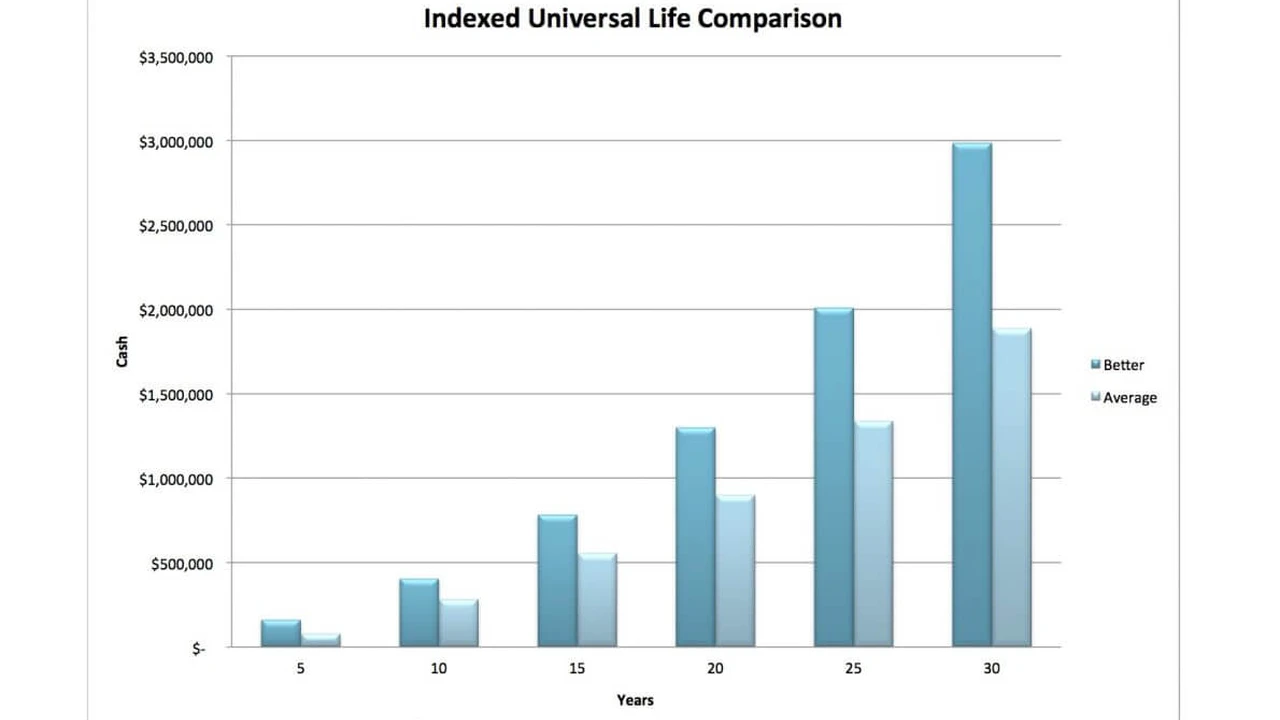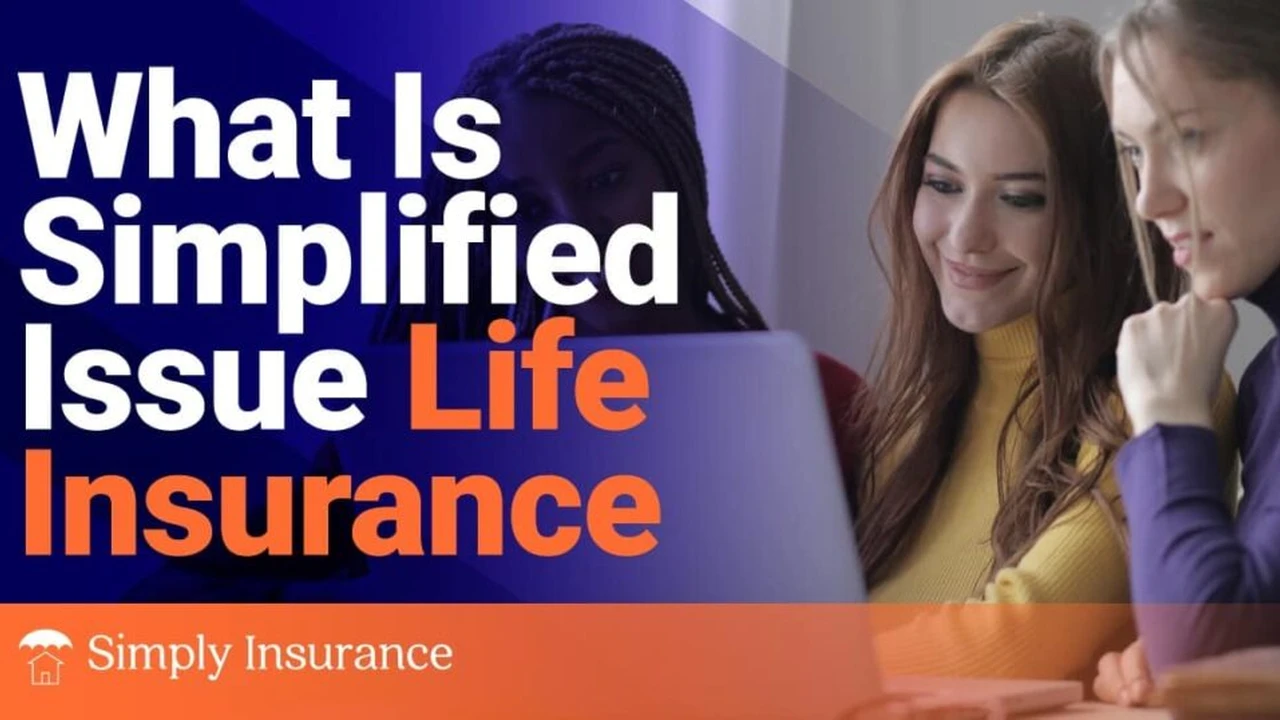Adjusting Your Universal Life Insurance Death Benefit
Learn about return of premium term life insurance and how it can refund your premiums if you outlive the policy term.

Return of Premium Term Life Insurance Explained
Understanding Return of Premium Term Life Insurance ROP
Hey there! Let's talk about something pretty cool in the world of life insurance: Return of Premium (ROP) Term Life Insurance. You know how with regular term life insurance, you pay your premiums for a set period, and if you don't pass away during that term, the policy just expires, and you don't get any money back? Well, ROP is different. It's designed to give you your money back if you outlive the policy term. Think of it as a win-win situation: either your beneficiaries get a death benefit, or you get your premiums returned. Pretty neat, right?
So, how does it work? With an ROP policy, you pay a slightly higher premium than a traditional term life policy. This extra cost essentially funds the 'return of premium' feature. If you're still alive when the term ends (say, after 20 or 30 years), the insurance company refunds all the premiums you've paid throughout the policy's life. It's like a forced savings account that also provides life insurance coverage. If you pass away during the term, your beneficiaries receive the death benefit, just like a standard term policy, but you don't get the premiums back, of course, because the death benefit has been paid out.
This type of policy can be really appealing to folks who are a bit hesitant about 'wasting' money on insurance premiums if they don't end up needing the death benefit. It offers a sense of security, knowing that at the very least, you'll get your money back if you stay healthy and live a long life. It's a great option for those who want the temporary coverage of term life but also appreciate the potential for a financial return.
Key Features and Benefits of ROP Term Life Insurance
Let's dive into what makes ROP term life insurance stand out. The main feature, as we've discussed, is the premium refund. But there's more to it than just that. Here are some key benefits and features you should know about:
- Guaranteed Premium Refund: This is the big one. If you outlive the policy term, you get 100% of your eligible premiums back. This refund is typically tax-free, which is a huge bonus!
- Death Benefit Protection: Just like any other life insurance, it provides a death benefit to your beneficiaries if you pass away during the policy term. This ensures your loved ones are financially protected.
- Fixed Premiums: Your premiums are usually fixed for the entire term of the policy, so you don't have to worry about them increasing over time. This makes budgeting easier.
- Cash Value Potential (Indirectly): While ROP policies don't build cash value in the traditional sense like whole life insurance, the guaranteed return of premiums can be seen as a form of forced savings or a 'cash value' that becomes accessible at the end of the term.
- Convertibility: Many ROP policies offer the option to convert to a permanent life insurance policy (like whole life or universal life) at the end of the term, often without needing a new medical exam. This can be a great feature if your needs change.
- Peace of Mind: Knowing that you're covered and that your premiums won't just disappear if you don't use the death benefit can provide significant peace of mind.
It's important to remember that the premiums for ROP policies are higher than for traditional term policies. This is the trade-off for the guaranteed refund. You're essentially paying for the option to get your money back. So, while it's a great feature, it's crucial to weigh the cost against the benefits for your personal financial situation.
Comparing ROP Term Life with Traditional Term Life Insurance
Alright, let's put ROP term life and traditional term life side-by-side so you can see the differences clearly. This comparison will help you understand which one might be a better fit for your needs and budget.
Traditional Term Life Insurance
- Cost: Generally lower premiums.
- Coverage: Provides a death benefit for a specific term (e.g., 10, 20, 30 years).
- Premium Return: No return of premiums if you outlive the term. The policy simply expires.
- Simplicity: Straightforward and easy to understand.
- Best For: Individuals who need affordable coverage for a specific period (e.g., while raising a family, paying off a mortgage) and are comfortable with the 'use it or lose it' aspect.
Return of Premium Term Life Insurance
- Cost: Higher premiums than traditional term life.
- Coverage: Provides a death benefit for a specific term.
- Premium Return: Guarantees a refund of all eligible premiums if you outlive the term.
- Added Value: Offers a 'savings' component, as you get your money back.
- Best For: Individuals who want temporary coverage but are hesitant about premiums being 'lost' and appreciate the guaranteed return, or those who see it as a disciplined savings vehicle.
The choice between the two often comes down to your budget and your philosophy on insurance. If you want the absolute lowest cost for coverage and are okay with the premiums disappearing if you don't use the death benefit, traditional term life is probably your go-to. However, if you're willing to pay a bit more for the assurance of getting your money back, ROP term life could be a fantastic option. It's like buying a lottery ticket where you get your money back if you don't win the jackpot!
Who Should Consider Return of Premium Term Life Insurance Ideal Scenarios
So, who exactly is ROP term life insurance a good fit for? While it's not for everyone, there are several scenarios where it really shines. Let's explore some ideal candidates and situations:
- Budget-Conscious Individuals Who Dislike 'Wasted' Premiums: If the idea of paying into an insurance policy and getting nothing back if you don't die bothers you, ROP is perfect. It eliminates that 'wasted money' feeling.
- Disciplined Savers Looking for a Forced Savings Mechanism: For those who struggle to save consistently, ROP can act as a forced savings plan. You pay the premiums, and at the end of the term, you get a lump sum back, which can be used for retirement, a down payment, or other financial goals.
- People with Specific Short-to-Medium Term Financial Obligations: If you have a 20 or 30-year mortgage, or you're planning to send kids to college in 15-20 years, an ROP policy can cover that specific period. If you outlive the obligation, you get your money back, which can then be used for other purposes.
- Those Who Want Flexibility for Future Planning: The convertibility feature often found in ROP policies allows you to transition to permanent coverage later in life without new medical underwriting. This is great for people whose health might decline over time.
- Individuals Seeking Tax-Free Returns: The premium refund from an ROP policy is generally tax-free, making it an attractive option for those looking for tax-efficient ways to save or receive a lump sum.
- Younger Individuals: The younger and healthier you are, the lower your premiums will be, making the ROP feature more affordable and the potential return more significant over a longer term.
It's less ideal for those who need the absolute cheapest coverage possible and are comfortable with the traditional term life model. Also, if you have immediate, high-return investment opportunities, the extra premium paid for ROP might be better invested elsewhere. But for many, the peace of mind and guaranteed return make it a very compelling choice.
Potential Drawbacks and Considerations for ROP Term Life Insurance
While ROP term life insurance has some fantastic benefits, it's not without its downsides. It's crucial to understand these before making a decision. Let's look at some potential drawbacks and important considerations:
- Higher Premiums: This is the most obvious one. You'll pay significantly more for an ROP policy than for a comparable traditional term life policy. This extra cost is essentially what funds the return of premium feature.
- Opportunity Cost: The money you pay in higher premiums for an ROP policy could potentially be invested elsewhere, perhaps in a mutual fund or retirement account, where it might grow at a higher rate than the 'return' you get from the ROP policy. You need to consider if the guaranteed, tax-free return of premiums outweighs the potential for higher investment growth.
- Inflation Erosion: While you get 100% of your premiums back, that money will be worth less in the future due to inflation. For example, $100 paid today will have less purchasing power in 20 or 30 years.
- Commitment: ROP policies often require a longer-term commitment to realize the full benefit. If you cancel the policy early, you might not get any premiums back, or only a partial amount, depending on the policy's terms.
- Not a Savings Account: While it feels like a savings account, it's not. You can't access the 'cash value' (your premiums) until the end of the term, unlike some permanent policies where you can borrow against the cash value.
- Complexity: While not overly complex, it's a bit more nuanced than traditional term life, and understanding the terms and conditions, especially around early cancellation, is important.
Before jumping into an ROP policy, it's a good idea to do a thorough financial analysis. Compare the cost of an ROP policy versus a traditional term policy plus investing the difference in premiums. This will help you determine if the guaranteed return is worth the higher upfront cost and the potential opportunity cost of not investing that money elsewhere.
Top ROP Term Life Insurance Providers and Products in the US
When it comes to Return of Premium Term Life Insurance, several reputable providers in the US offer competitive products. It's always a good idea to get quotes from multiple companies to compare rates and features. Here are a few prominent players and what they might offer:
1. State Farm
- Product: State Farm offers a 'Return of Premium Term Life' policy.
- Key Features: Known for strong customer service and a wide network of agents. Their ROP policies typically offer a guaranteed return of all premiums paid if you outlive the term. They often have flexible term lengths.
- Use Case: Excellent for individuals who prefer working with a local agent and value personalized service. Good for those looking for a reliable, well-established insurer.
- Pricing: Premiums will vary significantly based on age, health, term length, and coverage amount. Expect them to be higher than State Farm's traditional term policies. For a healthy 35-year-old male seeking $500,000 in coverage for a 20-year term, a traditional term might be around $30-40/month, while an ROP policy could be in the $60-80/month range. (These are illustrative estimates and not actual quotes).
2. Northwestern Mutual
- Product: While primarily known for whole life, Northwestern Mutual also offers term life insurance with ROP riders or features.
- Key Features: High financial strength ratings and a reputation for excellent policyholder dividends (though ROP is a separate feature). Their ROP options are often integrated with their strong financial planning approach.
- Use Case: Ideal for individuals who want a comprehensive financial planning approach and value a company with a long history of financial stability.
- Pricing: Generally on the higher end, reflecting their strong financial standing and service. A 35-year-old healthy female for a $750,000, 30-year ROP term policy might see premiums in the $90-120/month range. (Again, estimates).
3. Guardian Life
- Product: Guardian offers term life insurance with a Return of Premium rider.
- Key Features: Known for its mutual structure, meaning policyholders can receive dividends. Their ROP rider allows you to add the premium return feature to their standard term policies.
- Use Case: Good for those who appreciate the potential for dividends from a mutual company and want the flexibility to add ROP to a base term policy.
- Pricing: Competitive, especially when considering the potential for dividends. A 40-year-old healthy male for a $1,000,000, 25-year ROP term policy could expect premiums around $150-200/month.
4. MassMutual
- Product: MassMutual, another mutual company, provides term life insurance with ROP options.
- Key Features: Strong financial ratings and a history of paying dividends. Their ROP policies are designed to provide a guaranteed return while offering robust coverage.
- Use Case: Similar to Guardian, suitable for those who value a mutual company structure and financial strength.
- Pricing: Generally competitive with other top-tier mutual companies.
5. Transamerica
- Product: Transamerica offers 'Trendsetter ROP' term life insurance.
- Key Features: Known for offering a variety of term lengths and coverage amounts. Their Trendsetter ROP is specifically designed as a return of premium product.
- Use Case: A good option for those looking for a dedicated ROP product from a well-known insurer with a wide range of options.
- Pricing: Often competitive, especially for longer terms.
Important Note on Pricing: The premium estimates provided are purely illustrative. Actual premiums depend on a multitude of factors including your age, gender, health, lifestyle (smoking, dangerous hobbies), coverage amount, term length, and the specific underwriting guidelines of each insurer. It is absolutely essential to get personalized quotes from several providers to find the best rates for your individual circumstances. An independent insurance agent can be incredibly helpful in comparing these options for you.
ROP Term Life Insurance in Southeast Asia Market Insights
The concept of Return of Premium (ROP) term life insurance is also gaining traction in Southeast Asian markets, though its availability and specific features might vary by country. The region's growing middle class and increasing awareness of financial planning are driving demand for more sophisticated insurance products.
General Trends in Southeast Asia
- Growing Demand: As incomes rise, more people are looking for ways to protect their families and save for the future, making ROP policies attractive.
- Local Variations: Insurance regulations and product offerings can differ significantly between countries like Singapore, Malaysia, Thailand, Indonesia, and the Philippines.
- Focus on Savings: Many consumers in Southeast Asia value products that combine protection with a savings or investment component, which ROP policies inherently offer.
- Digitalization: There's a growing trend towards digital platforms for insurance, making it easier to compare and purchase policies.
Examples of Providers and Products (Illustrative)
While specific product names and features can change rapidly, here are some general examples of how ROP might appear in the region:
1. Prudential (e.g., Singapore, Malaysia, Indonesia)
- Product: Prudential often offers term life plans with optional riders that include a 'Return of Premium' or 'Maturity Benefit' feature.
- Key Features: Strong regional presence, diverse product portfolio. Their ROP options typically refund premiums at the end of the term if no claim is made.
- Use Case: Popular among individuals seeking comprehensive coverage from a well-established international insurer.
- Pricing: Competitive within the local market, reflecting the added benefit of premium return.
2. AIA (e.g., Thailand, Hong Kong, Singapore)
- Product: AIA, a major player in Asia, also provides term life solutions that may incorporate ROP features or similar maturity benefits.
- Key Features: Extensive network, strong brand recognition. Their ROP-like products aim to provide financial protection with a potential return on investment.
- Use Case: Suitable for those looking for a trusted regional insurer with a wide range of financial products.
- Pricing: Varies by country and specific product, but generally aligns with market expectations for ROP features.
3. Great Eastern Life (e.g., Singapore, Malaysia)
- Product: Great Eastern, a prominent insurer in Singapore and Malaysia, offers term plans that might include ROP or cash-back features.
- Key Features: Strong local market knowledge, tailored products for regional needs.
- Use Case: Ideal for local residents who prefer an insurer with deep roots and understanding of the local market.
- Pricing: Generally competitive within the local market.
Important Considerations for Southeast Asia:
- Local Regulations: Always check the specific insurance regulations in your country, as they can impact policy terms, tax implications, and consumer protections.
- Currency Fluctuations: If you're an expatriate or dealing with policies across borders, consider currency exchange rate risks.
- Financial Advisor: Engaging with a local financial advisor who understands the specific market and product offerings is highly recommended.
Just like in the US, pricing for ROP policies in Southeast Asia will depend on individual factors and the specific insurer. It's crucial to obtain personalized quotes and understand the terms and conditions thoroughly before committing to a policy.
How to Choose the Best ROP Term Life Insurance Policy for You
Choosing the right ROP term life insurance policy involves a bit of homework, but it's worth it to ensure you get the best fit for your financial goals. Here's a step-by-step guide to help you make an informed decision:
1. Assess Your Coverage Needs and Term Length
- How much coverage do you need? Consider your debts (mortgage, loans), income replacement for your family, future expenses (college, retirement for spouse), and final expenses. A common rule of thumb is 10-15 times your annual income, but a detailed needs analysis is better.
- How long do you need coverage? Match the term length to your longest financial obligation. If your mortgage is 20 years, a 20-year term might be appropriate. If you have young children, a 25 or 30-year term might make more sense.
2. Compare Premiums from Multiple Insurers
- Get multiple quotes: Don't settle for the first quote you receive. Premiums can vary significantly between companies for the same coverage. Use online comparison tools or work with an independent agent.
- Understand the 'extra' cost: Be clear on how much more you're paying for the ROP feature compared to a traditional term policy.
3. Evaluate the Insurer's Financial Strength and Reputation
- Check ratings: Look at ratings from independent agencies like A.M. Best, Standard & Poor's, Moody's, and Fitch. Higher ratings indicate greater financial stability and ability to pay claims.
- Read reviews: See what current policyholders say about their customer service and claims process.
4. Review Policy Features and Riders
- Convertibility: Does the policy offer the option to convert to permanent insurance at the end of the term? This can be valuable.
- Riders: Are there any useful riders available, such as accelerated death benefit (for terminal illness), waiver of premium (if you become disabled), or child riders?
- Exclusions: Understand any exclusions that might apply to the policy.
5. Consider the Opportunity Cost
- Invest the difference: Calculate if you could potentially earn more by buying a cheaper traditional term policy and investing the premium difference in a separate investment vehicle. This requires discipline, but it's a valid financial strategy.
- Tax implications: Remember that the ROP refund is generally tax-free, which can be a significant advantage compared to taxable investment gains.
6. Consult a Financial Advisor
- Expert guidance: A qualified financial advisor can help you assess your needs, compare policies, and integrate life insurance into your overall financial plan. They can also help you understand the tax implications specific to your situation.
By carefully considering these factors, you can confidently choose an ROP term life insurance policy that provides both the protection your family needs and the financial return you desire.
Tax Implications of Return of Premium Term Life Insurance
One of the most attractive aspects of Return of Premium (ROP) term life insurance is its favorable tax treatment. Understanding these implications is crucial for financial planning.
1. Premium Refunds are Generally Tax-Free
This is the big one! If you outlive your ROP policy term and receive a refund of your premiums, that refund is typically considered a return of capital by the IRS (in the US) and is therefore not taxable income. This is a significant advantage compared to many other savings or investment vehicles where earnings are subject to income tax.
Example: If you paid $50,000 in premiums over a 20-year term and receive $50,000 back, that entire $50,000 is usually tax-free.
2. Death Benefits are Also Generally Tax-Free
Just like with traditional life insurance policies, the death benefit paid to your beneficiaries upon your passing is generally income tax-free. This means your loved ones receive the full amount of the policy to help them financially, without having to worry about a tax burden on that money.
3. No Cash Value Growth to Tax Annually
Unlike some permanent life insurance policies that build cash value which can grow tax-deferred, ROP policies don't have a traditional cash value component that generates annual taxable gains. This simplifies tax reporting.
4. Potential for Estate Tax Implications
While the death benefit is income tax-free, it can be included in your taxable estate for estate tax purposes if your estate is large enough to be subject to federal or state estate taxes. However, this is typically a concern for very high net worth individuals. Proper estate planning, such as placing the policy in an irrevocable life insurance trust (ILIT), can help mitigate potential estate taxes.
5. Early Cancellation and Taxable Gains
If you surrender your ROP policy early, and the amount you receive back (if any) is more than the total premiums you've paid, that difference could be considered taxable income. However, most ROP policies are structured so that the surrender value before the end of the term is less than or equal to the premiums paid, making this less common. Always check your specific policy's terms regarding early surrender values.
Important Disclaimer: Tax laws are complex and can change. The information provided here is for general informational purposes only and does not constitute tax advice. You should always consult with a qualified tax professional or financial advisor to understand the specific tax implications of an ROP policy for your individual situation.
Common Misconceptions About ROP Term Life Insurance
Return of Premium (ROP) term life insurance is a unique product, and with uniqueness often come misconceptions. Let's clear up some common misunderstandings:
Misconception 1: It's a High-Return Investment
Reality: While you get your premiums back, ROP is primarily an insurance product, not an investment vehicle designed for high returns. The 'return' is simply your own money back, without interest. If you factor in inflation, the purchasing power of the refunded money will be less than when you paid it. The primary benefit is the guaranteed return of capital, not capital appreciation. If your goal is aggressive investment growth, a traditional term policy combined with separate investments might yield better results.
Misconception 2: You Get Your Money Back No Matter What
Reality: You only get your premiums back if you outlive the policy term. If you pass away during the term, your beneficiaries receive the death benefit, and the premiums are not returned to you or your estate. Also, if you cancel the policy early, you might not receive any refund, or only a partial amount, depending on the policy's specific surrender schedule. It's not a flexible savings account you can dip into anytime.
Misconception 3: It's Always a Better Deal Than Traditional Term Life
Reality: Not necessarily. ROP policies come with significantly higher premiums. For some individuals, especially those on a tight budget or those who are disciplined investors, buying a cheaper traditional term policy and investing the premium difference in a separate, higher-growth investment vehicle might be a more financially advantageous strategy. The 'best' deal depends entirely on your personal financial situation, goals, and risk tolerance.
Misconception 4: The Refund is Taxable Income
Reality: As discussed, the premium refund from an ROP policy is generally considered a return of capital and is therefore tax-free in the US. This is a major advantage and often a key selling point for these policies.
Misconception 5: It Builds Cash Value Like Whole Life Insurance
Reality: ROP term life insurance does not build cash value in the same way permanent life insurance policies (like whole life or universal life) do. You cannot borrow against an ROP policy's 'cash value' during the term, nor does it typically accrue interest or dividends on the premiums paid. The 'return' is a lump sum of your original premiums at the end of the term, not a growing cash fund accessible throughout the policy's life.
Understanding these distinctions is key to making an informed decision and ensuring that an ROP policy aligns with your expectations and financial strategy.
Future Trends and Innovations in ROP Term Life Insurance
The insurance industry is constantly evolving, and Return of Premium (ROP) term life insurance is no exception. While the core concept remains, we can expect to see several trends and innovations shaping its future, especially with advancements in technology and changing consumer demands.
1. Increased Customization and Flexibility
- Modular ROP: Insurers might offer more modular ROP options, allowing policyholders to choose specific percentages of premiums to be returned, or even linking the return to certain health milestones.
- Dynamic Term Lengths: While ROP is typically fixed-term, there could be innovations allowing for more dynamic adjustments to term lengths based on life events, with corresponding adjustments to the ROP feature.
2. Integration with Wellness Programs
- Health-Linked ROP: Imagine an ROP policy where a portion of your premiums could be returned earlier or increased if you consistently meet wellness goals (e.g., step counts, healthy eating, regular check-ups) tracked via wearables. This incentivizes healthy living.
- Personalized Premiums: Data from wellness programs could lead to more personalized ROP premiums, rewarding healthier lifestyles with lower costs for the ROP feature.
3. Digitalization and Streamlined Processes
- Online Quoting and Application: The process of getting ROP quotes and applying for policies will become even more seamless and digital, with instant approvals for eligible applicants.
- AI-Powered Underwriting: Artificial intelligence and big data analytics will further streamline underwriting, potentially leading to faster approvals and more accurate risk assessments, which could impact ROP pricing.
4. Enhanced Financial Planning Tools
- Integrated Platforms: ROP policies will likely be offered as part of broader financial planning platforms, allowing consumers to easily compare the ROP feature against other savings and investment options within a single interface.
- Scenario Planning: Digital tools could help consumers visualize the long-term financial impact of ROP policies, including inflation adjustments and comparisons to alternative investment strategies.
5. Expansion in Emerging Markets
- Southeast Asia Growth: As financial literacy and disposable incomes grow in Southeast Asia, ROP policies are likely to become more prevalent, with products tailored to local economic conditions and cultural preferences.
- Microinsurance ROP: There's potential for simplified ROP products to be offered as microinsurance solutions, making the concept accessible to a wider demographic in developing regions.
6. Regulatory Adaptations
- Consumer Protection: As ROP policies become more popular, regulators will likely continue to ensure transparency and consumer protection, especially regarding early surrender values and the clarity of the 'return' feature.
The future of ROP term life insurance looks promising, with a focus on making it more personalized, accessible, and integrated into holistic financial wellness strategies. These innovations aim to make the product even more appealing to a broader range of consumers seeking both protection and a guaranteed financial return.
Final Thoughts on Return of Premium Term Life Insurance
So, there you have it – a deep dive into Return of Premium (ROP) term life insurance. It's a really interesting product that sits at the intersection of traditional life insurance and a savings mechanism. For many, the idea of getting all their premiums back if they outlive their policy term is incredibly appealing, offering a sense of financial security that traditional term life doesn't provide.
It's not a one-size-fits-all solution, though. The higher premiums are a real consideration, and it's crucial to weigh that extra cost against the guaranteed, tax-free return. For some, investing the difference in premiums might yield a higher financial gain, but for others, the discipline of the ROP policy and the peace of mind it offers are well worth the price.
Whether you're in the US or exploring options in Southeast Asia, the key is to do your homework. Understand your own financial needs, compare quotes from various reputable providers, and don't hesitate to chat with a financial advisor. They can help you navigate the complexities and figure out if an ROP policy truly aligns with your long-term goals. Ultimately, it's about finding the right balance of protection and financial strategy that works best for you and your loved ones.
:max_bytes(150000):strip_icc()/277019-baked-pork-chops-with-cream-of-mushroom-soup-DDMFS-beauty-4x3-BG-7505-5762b731cf30447d9cbbbbbf387beafa.jpg)






